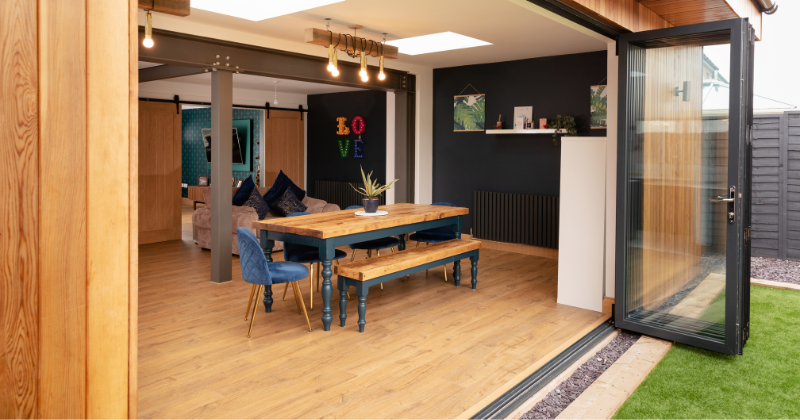Getting an extension is a great option for adding more space without the hassle of finding a new home, but the process of getting planning permission for extensions can be a tricky one!
Extensions are great for adding a variety of new features to transform your home; garages, sunrooms, conservatories, porches and so on can give a property a new lease of life. However, planning this can be a stressful process! There’s often lots to think about; you have to find a reputable company to do the work for you, determine the price and accept a level of disruption to your daily life. On top of all this, there’s also planning permission to think about!
When it comes to having a plan for an extension accepted, there are lots of factors to consider that could affect your application. Different rules will apply depending on the area you live in, and this could influence anything from window size to the colour you paint your extension. In Scotland, there are things to take into account when planning your extension, but it is possible to have an extension that won’t require any planning permission at all.
It’s worth having in mind the various factors that determine whether or not you will need planning permission. The process of being granted permission can be long and arduous, especially if it needs to go through multiple revisions. So, here’s what you need to know about planning permission for extensions in Scotland.
Permitted Development
If your extension meets certain requirements then you may not need to apply for planning permission. This is called “permitted development”. The rules for permitted development depend on how many stories your proposed extension will have.
Single-storey
Your single-storey extension will not need planning permission so long as:
- It’s at the rear of the property.
- It doesn’t extend over 3 metres behind the back of the house if it is a terraced house, or 4 metres if the property isn’t terraced.
- The eaves (the overhanding edges of a roof, often where the gutters are attached) are no higher than 3 metres.
- The total height is under 4 metres.
- It doesn’t cover a larger area of ground than the original property.
- It takes up less than half of the space behind the property.
- It isn’t in a conservation area.
Multi-storey
A multi-storey extension doesn’t need planning permission if it meets these requirements:
- It’s at the rear of the property.
- There are at least 10 metres between the extension and the property’s boundaries.
- It isn’t higher than your house – chimneys excluded.
- It doesn’t cover a larger area of ground than the original property.
- It takes up less than half of the space behind the property.
- It isn’t in a conservation area.
Extensions Requiring Planning Permission
If your desired extension doesn’t meet all the necessary requirements then you will need to apply for planning permission before work can begin. Whilst this is more effort than a Permitted Development, you’ll be left with a truly unique and fantastic feature to your home.
In most cases, it will take 8-13 weeks for your proposed extension to go through the application process. However this may be longer when the extension concerns a listed building or a building within a conservation area.
Stages of Gaining Planning Permission
- Firstly you should find your local planning department. Find out as much as you can about what is likely to be accepted and rejected. Knowing this will help to guide your application and give you a greater chance of success.
- Next you will apply to the local council. This will need to include information regarding location, site plan, proof of ownership and – where necessary – an application fee.
- Your application will then be assessed according to a variety of factors; disruption, affect on nearby buildings, conservation and safety are some of the things that will be taken into account.
- Finally the decision on whether to grant planning permission will be made.
If you want any advice on what to do next with your extension then get in touch with our team! We can offer advice on whether your proposed extension needs planning permission, and, if it does, what you need to do to get it accepted.

